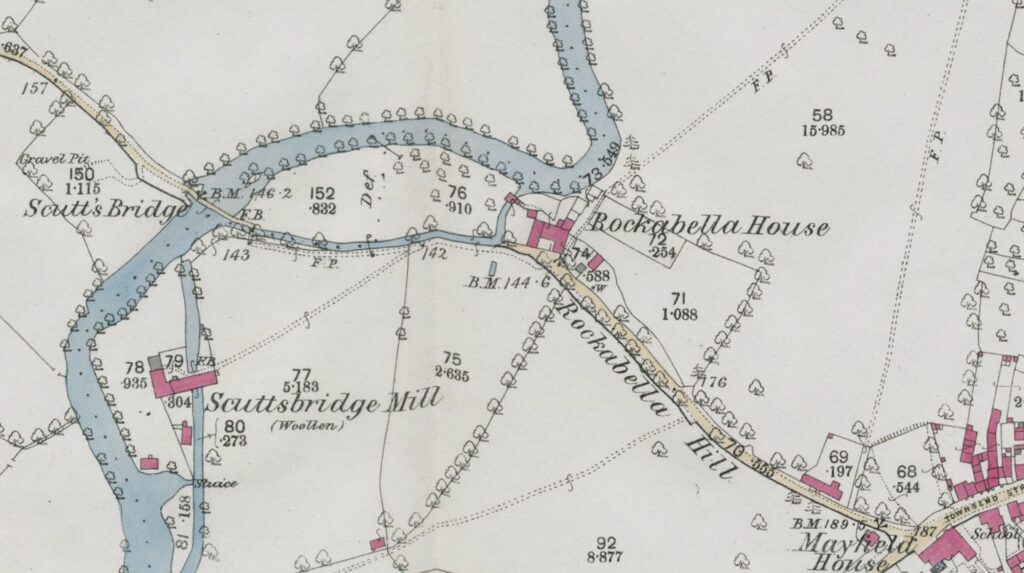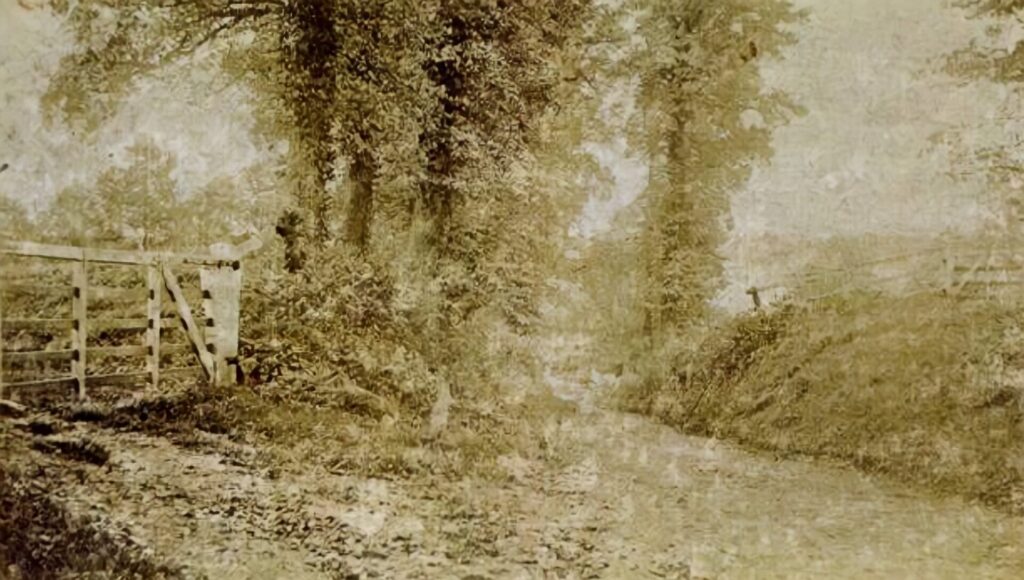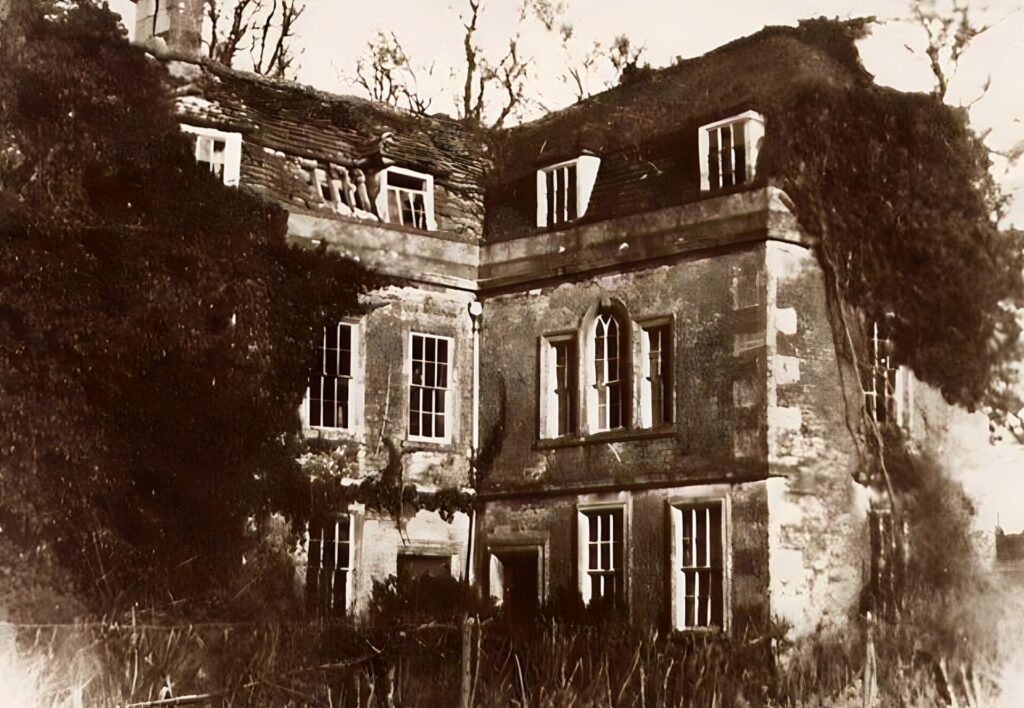(Extract from “Rode in the Industrial Age”, Peter Daniel [Somerset Industrial Archaeological Society, 2021])
There are no early records of a mill at Rockabella – the earliest definite reference found is when Jonathan Noad rented this property from Samuel Norman in 1795. HJonathan was the adopted son of Thomas Noad, who died in 1760, and both were described as clothiers. There is an earlier reference, in Thomas’s will of 1760, in which he states “I likewise give and bequeath to the said Jonathan Miller otherwise Noad the sum of three hundred pounds to be paid to him within one month after my decease in order that he may be the better enabled to carry on the trade which I have set him up in and I likewise give him all the tools and utensils belonging to the Woollen Manufactory which I now am or may be possessed of at the time of my decease…”. Unfortunately the critical part where he bequeaths the mill and house is missing and it is not entirely clear if it refers to Rackabella or not.
The plan below shows the mill as it was on the Ordnance Survey map of 1886. Unlike the other mills on the River Frome in this area there was no substantial weir to give a head of water and power available to drive a waterwheel would have been limited. There is a building across the leat and this may have been for a waterwheel-operated fulling stock (see below). Alternatively the leat may only have been for process water, and the building across it have been associated with washing and dyeing. The tithe map of 1839 only shows part of the the leat, which tends to suggest that it was mainly used for process water.
When Jonathan Noad made his will, leaving it to a son, another Jonathan, in 1809, he described the premises as a house with buildings, workshops and machinery (see extract from the will of Jonathan Noad, below). The first clear reference to a factory as such is in 1827 when pipes for a rack stove were fitted on a day when the steam-engine was stopped.
Jonathan Noad the elder died in 1814, and his son in 1829. In 1830 the premises were advertised for letting as a complete clothing factory driven by a newly-erected steam-engine of 14hp by Boulton and Watts. The machinery included two broad gigs, a fulling stock, washer, scalding cistern, scribbling and carding engines, brusher, cutter, and shearing frames, and was sufficient to make ten pieces of broadcloth a week. There was also a stove rack and a dye-house. It was left to Samuel Evans, who was employing about fifty hands in 1838.
The mill and house remained in the ownership of the Noad family. In 1839 it was still owned by Mrs Helen Noad, the widow of Jonathan junior, and let to Samuel Evans (and dexcribed as house, factory, gardens, etc). Evans also rented the adjacent plots 217 and 218. In 1842 it was again “to let”, described much as it had been in 1830. This time there was no taker, for the factory was offered for sale in the following year, together with the engine, boiler and other machinery. It was bought by the Batten-Pooll family of Rode Manor, but probably not used again as a factory, and by 1858 it was ruinous. The house adjoining remained in use for much longer and was still occupied in 1911.
The ruins of house and mill survive within an overgrown enclosure. Various leats and walls are visible, together with a large square structure which may be the base for a chimney.
Extract from The Will of Jonathan Noad 1809
“I give devise and bequeath unto and to the use of my son Jonathan Noad the dwelling house wherein I now live with all the buildings workshops fixtures, fixtures in trade members? and appurts thereto belonging and appertaining also the stable and all the machinery and all the utensils in trade with an orchard behind the same and a piece of pasture ground called Pishams near Cutsbridge containing four acres and a half.”


